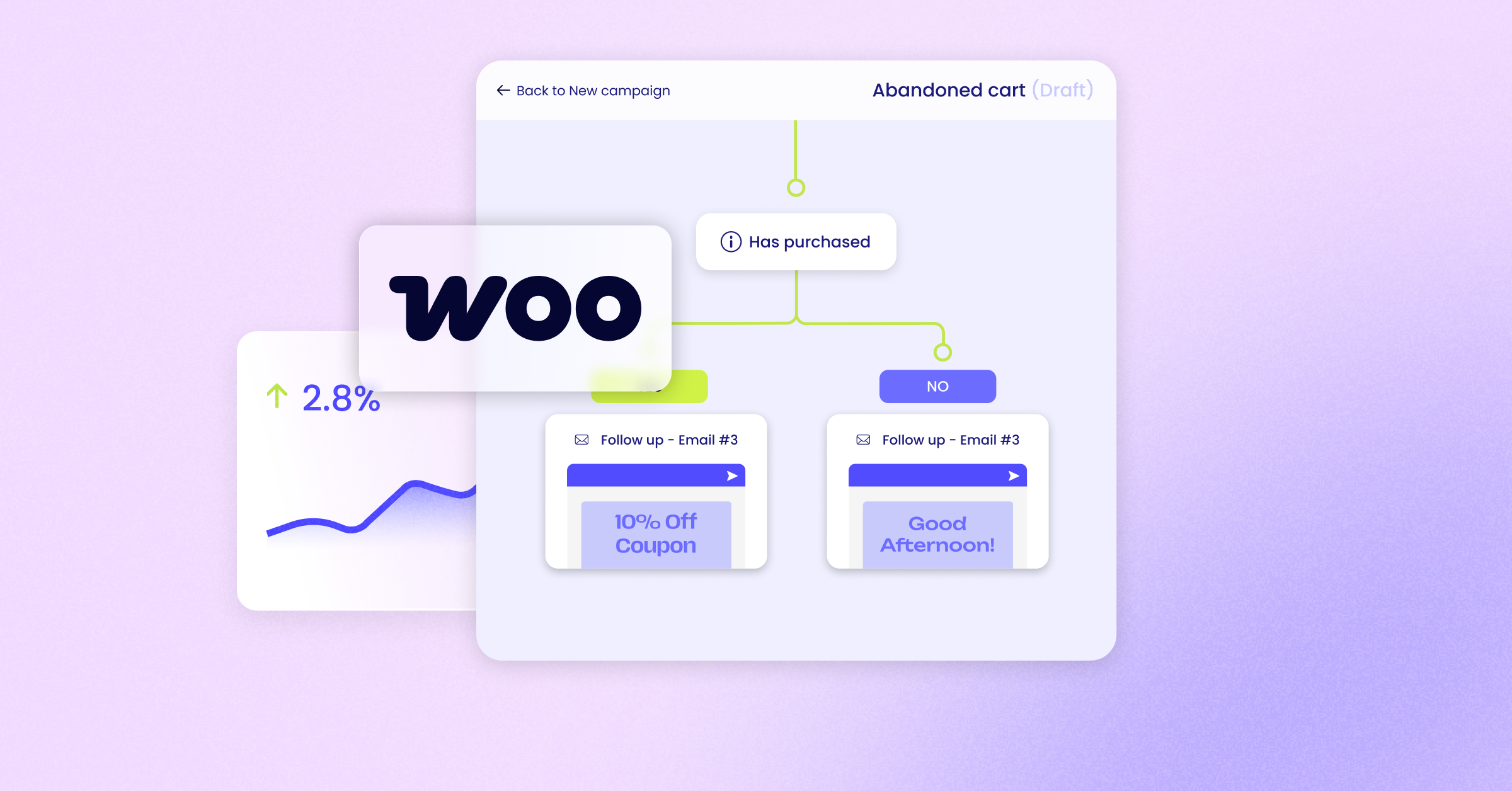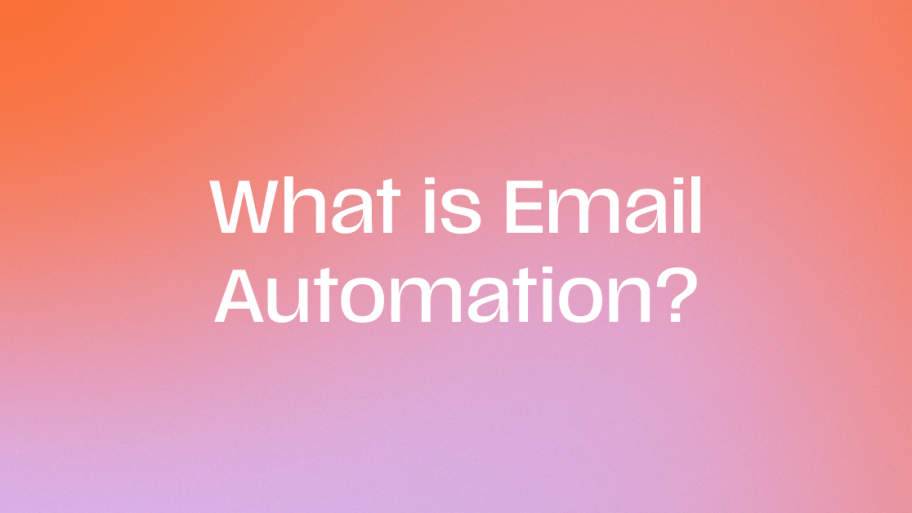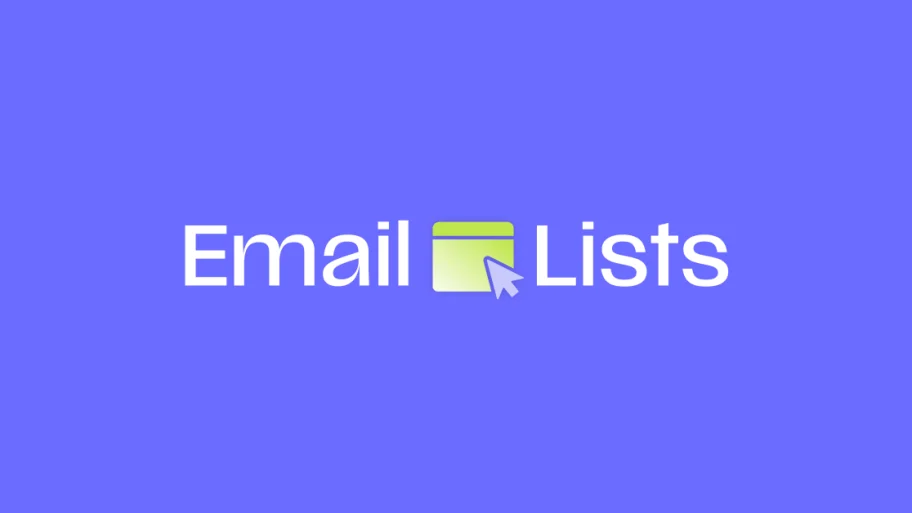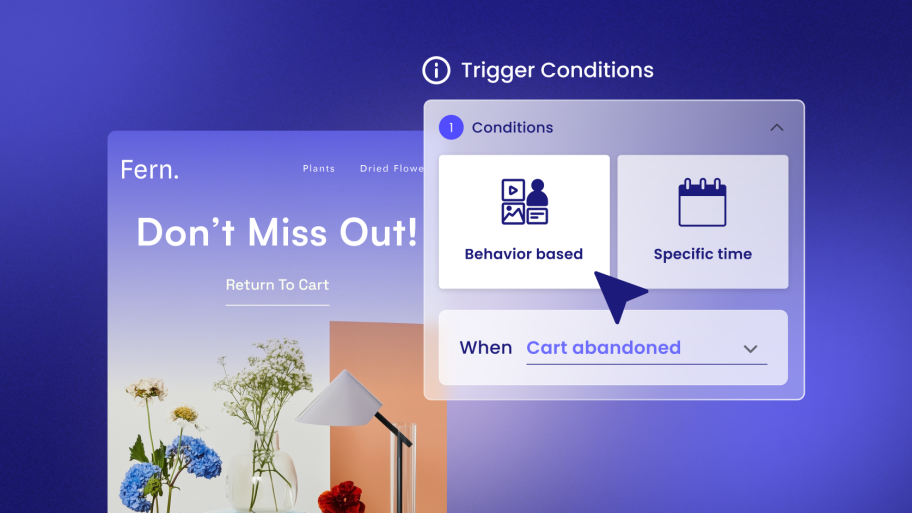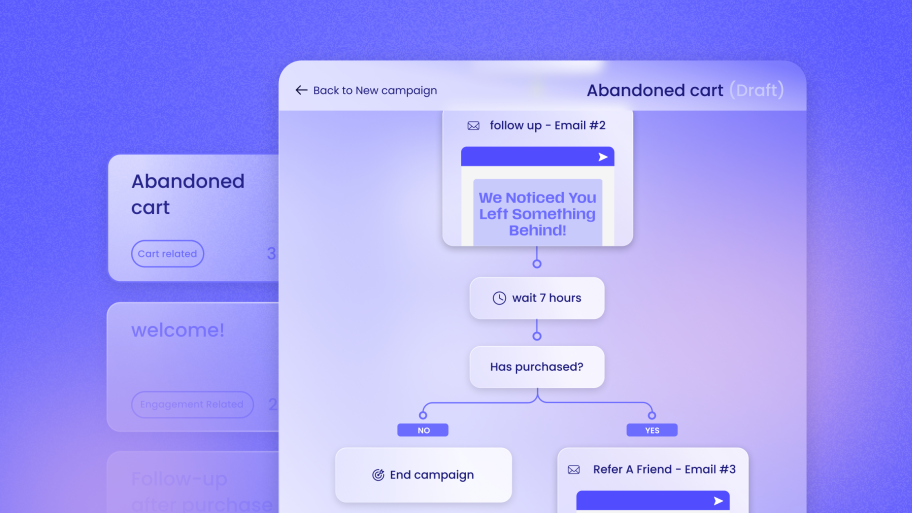Key Takeaways
- Customer Retention is Cost-Effective: Acquiring a new customer can cost five times more than retaining an existing one. Loyalty programs directly target retention, making them a high-ROI marketing strategy.
- Communication is Crucial: A loyalty program’s success hinges on effective communication. You need a robust system to notify members about their points, rewards, and exclusive offers. A WordPress-native tool like Send by Elementor is designed to handle this seamlessly through email and SMS automation.
- Simplicity Wins: The best loyalty programs are easy to understand and use. Customers should be able to see how they earn points and how they can redeem them without confusion.
- Data is Your Goldmine: Loyalty programs provide invaluable data about your customers’ purchasing habits, allowing for powerful segmentation and personalized marketing campaigns.
- Start with Clear Goals: Before you build anything, define what you want to achieve. Are you looking to increase purchase frequency, boost average order value, or encourage user-generated content? Your goals will shape your program’s structure.
- Choose the Right Model: From simple points-based systems to complex tiered programs, the right model depends on your brand, your products, and your customers’ preferences.
Why Your WooCommerce Store Needs a Loyalty Program
Still on the fence about launching a loyalty program? Let’s explore the compelling reasons why it’s one of the most powerful investments you can make for your online store. In today’s competitive market, simply having great products isn’t always enough. You need to create an experience that keeps customers coming back.
1. Skyrocket Customer Retention and Lifetime Value
The data doesn’t lie. Increasing customer retention rates by just 5% can increase profits by anywhere from 25% to 95%. Loyalty programs are designed specifically to encourage repeat purchases. By rewarding customers for their continued business, you give them a powerful incentive to choose your store over a competitor.
Think about it from the customer’s perspective. If you have points saved up at Store A, you’re far more likely to shop there again to redeem your reward, even if Store B has a slightly lower price on a single item. This repeated business dramatically increases the Customer Lifetime Value (CLV) for each member, turning small, one-time purchases into a predictable stream of revenue.
2. Boost Average Order Value (AOV)
A well-designed loyalty program can effectively nudge customers to spend more per transaction. How? By setting strategic thresholds. For example, you might offer bonus points on orders over $100 or create rewards that encourage customers to add one more item to their cart.
Common tactics include:
- Threshold Bonuses: “Earn 50 bonus points on all orders over $75!”
- Product-Specific Points: “Get double points when you purchase from our new collection.”
- Tier Entry Incentives: “You’re only $20 away from reaching our VIP tier and unlocking free shipping for life!”
These strategies leverage psychological principles to make spending a little more feel like a smart, rewarding decision for the customer.
3. Gather Invaluable Customer Data and Insights
When a customer joins your loyalty program, they are giving you permission to learn more about them. This is a goldmine for your marketing efforts. You can track their purchase history, frequency, preferred product categories, and more.
This data allows you to move beyond generic, one-size-fits-all marketing. You can create highly targeted segments and personalize your communications. Imagine being able to send an exclusive offer for a customer’s favorite product category or a special birthday reward. This level of personalization makes customers feel seen and valued, strengthening their connection to your brand.
4. Create Brand Advocates and Drive Word-of-Mouth Marketing
Your most loyal customers are often your best marketers. A loyalty program gives them a platform and an incentive to spread the word. By incorporating a referral component, you can turn your happy customers into a powerful acquisition channel.
For example, you can offer points to a member for referring a friend, and give the new customer a welcome discount as well. It’s a win-win-win situation: the member is rewarded, the new customer gets a deal, and you gain a new, high-quality lead recommended by a trusted source. People trust recommendations from friends and family far more than they trust traditional advertising, making this an incredibly effective growth strategy.
5. Compete on More Than Just Price
In a crowded marketplace, competing solely on price is a race to the bottom. It erodes your margins and attracts fickle customers who will leave as soon as they find a better deal. A loyalty program allows you to build a competitive moat based on value and relationships.
It shifts the customer’s focus from “What’s the cheapest option?” to “What’s the most rewarding experience?” When customers are invested in your brand’s ecosystem—earning points, climbing tiers, and enjoying exclusive benefits—the price becomes a less significant factor in their purchasing decision.
Different Types of WooCommerce Loyalty Programs
Not all loyalty programs are created equal. The structure you choose should align with your business goals, brand identity, and customer behavior. Let’s break down the most common models.
1. The Classic Points-Based Program
This is the most common and straightforward type of loyalty program. Customers earn points for specific actions, primarily for making purchases. They can then redeem these points for rewards, such as discounts, free products, or exclusive merchandise.
- How it works: Customers typically earn a set number of points for every dollar spent (e.g., 10 points for every $1).
- Best for: Businesses that want a simple, easy-to-understand program that encourages frequent, small-to-medium-sized purchases. It’s a great starting point for most WooCommerce stores.
- Example: A coffee shop’s online store gives customers 5 points for every dollar spent. Once they reach 500 points, they can redeem them for a $5 discount on their next order.
2. The Aspirational Tiered Program
Tiered programs create a sense of exclusivity and achievement. Customers unlock new levels of benefits as their spending or engagement increases. Each tier offers progressively better rewards, motivating customers to climb the ladder.
- How it works: Customers start in a base tier (e.g., Bronze) and move up to higher tiers (Silver, Gold, Platinum) based on their annual spending or points accumulated.
- Best for: Brands with a wide range of customer spending levels, from casual shoppers to devoted fans. It’s excellent for fashion, beauty, or hobbyist stores where status and exclusivity are powerful motivators.
- Example: A beauty brand’s program might have three tiers.
- Tier 1 (Insider): Earn points on purchases.
- Tier 2 (VIP): Achieved after spending $250. Members get early access to sales and a birthday gift.
- Tier 3 (Elite): Achieved after spending $1,000. Members get all previous benefits plus free shipping on all orders and exclusive access to limited-edition products.
3. The Exclusive VIP or Paid Program
Instead of earning their way in, customers pay a one-time or recurring fee to join an exclusive club. This model works best when the value of the benefits clearly outweighs the cost of membership.
- How it works: Customers pay an annual fee to unlock instant, high-value perks.
- Best for: Businesses that can offer significant, ongoing benefits that justify the cost. Think free shipping, exclusive content, or guaranteed access to new products.
- Example: An online bookstore charges a $25 annual fee for its “Bookworm Club.” Members get free shipping on all orders, a 10% discount on all purchases, and one free ebook each month.
4. The Straightforward Cashback Program
This program offers a direct financial incentive. Customers get a percentage of their spending back as store credit or a cash equivalent to use on future purchases. It’s simple, transparent, and appeals to budget-conscious shoppers.
- How it works: Customers receive a percentage (e.g., 5%) of their total purchase amount back as a credit in their account.
- Best for: Businesses with a highly competitive market where a direct financial reward is a key differentiator. It works well for electronics, hardware, or other high-ticket item stores.
- Example: An outdoor gear store gives customers 3% cashback on every purchase. If a customer spends $200, they get $6 in credit to use on their next order.
5. The Mission-Driven or Hybrid Program
This model blends transactional rewards with non-monetary benefits that align with the brand’s values. It’s a way to build a deeper emotional connection with customers.
- How it works: Customers can choose to redeem their points for discounts or donate them to a charitable cause the brand supports. The program might also offer unique, experience-based rewards.
- Best for: Brands with a strong social or environmental mission. It attracts customers who want their spending to have a positive impact.
- Example: An eco-friendly clothing store allows customers to use 100 points for a $1 discount or to plant a tree through a partner organization.
How to Build Your WooCommerce Loyalty Program: A Step-by-Step Guide
Ready to bring your loyalty program to life? Follow this comprehensive guide to ensure you cover all the essential steps, from initial strategy to a successful launch and beyond.
Step 1: Define Your Goals and Budget
Before you choose a plugin or design a single graphic, you need to know what you want to achieve. Your goals will be the North Star for every decision you make. Get specific and make them measurable.
- Bad Goal: “I want to increase customer loyalty.”
- Good Goal: “I want to increase our repeat customer rate from 25% to 35% within the next 12 months.”
Other potential goals could be:
- Increase Average Order Value (AOV) by 15%.
- Boost purchase frequency from 1.5 to 2.0 orders per customer per year.
- Generate 100 new customers per month through referrals.
Next, consider your budget. Your main costs will be the loyalty program plugin itself and the “cost” of the rewards you give out. Factoring this into your profit margins is essential. A loyalty program is an investment, so be prepared to allocate resources to make it successful.
Step 2: Understand Your Customers
Who are you building this program for? The more you know about your customers, the more appealing you can make your program. Dig into your analytics and customer data to answer questions like:
- Who are your best customers? Look at their purchase history, frequency, and total spending.
- What do they buy? Are there specific products or categories that your repeat customers love?
- What motivates them? Are they primarily price-sensitive, or do they value quality, exclusivity, and brand identity?
If you don’t have this data readily available, consider sending out a survey to your existing customers. Ask them what kind of rewards they would find most valuable. A small incentive, like a 10% discount for completing the survey, can yield incredibly valuable insights.
Step 3: Choose the Right Loyalty Program Model
Based on your goals and customer insights, select the program structure that makes the most sense.
- If your goal is to increase purchase frequency for a wide range of customers, a simple points-based system is a great start.
- If you want to reward your highest-spending customers and create an aspirational goal, a tiered program is the way to go.
- If your brand has a strong community aspect and can offer high-value perks, a paid/VIP program could generate a new revenue stream.
Don’t be afraid to start simple. You can always evolve your program over time as you learn more about what resonates with your audience.
Step 4: Select the Right Tools and Plugins
This is a critical step. Your WooCommerce store needs the right combination of tools to manage the program’s mechanics and, just as importantly, to communicate with your members.
The Core of Engagement: Communication and Automation
A loyalty program is silent and ineffective without a powerful communication engine. Customers need to be constantly reminded of the value you’re providing. They need to know when they’ve earned points, when they’re close to a reward, and when you have special offers just for them. This is where a dedicated communication toolkit becomes indispensable.
Our Top Recommendation: Send by Elementor
While there are many plugins that can handle the mechanics of a loyalty program (counting points, creating coupons), Send by Elementor is the ultimate WordPress-native communication toolkit designed to power the engagement side of your program. It was built from the ground up for WordPress and WooCommerce, ensuring seamless integration and eliminating the headaches of syncing data with external platforms.
Here’s why it’s the logical first choice for managing loyalty program communications:
- Truly WordPress-Native: It lives inside your WordPress dashboard. There’s no complex API setup or data syncing issues. Your loyalty program data and your communication tool are in the same ecosystem, which means they can talk to each other flawlessly.
- All-in-One Toolkit (Email & SMS): You can manage all your loyalty communications from one place. Send automated emails for points updates and use SMS for time-sensitive alerts like a “24-hour double points” flash sale.
- Effortless Marketing Automation: This is the key. You can set up automated workflows (“flows”) that trigger based on customer actions. For a loyalty program, this is incredibly powerful. You can create flows for:
- Welcome Series: Onboard new members and explain how the program works.
- Points Balance Updates: Automatically send a monthly email showing their current point total.
- Reward Threshold Nudges: “You’re only 50 points away from your next reward!”
- Tier Upgrade Congratulations: Celebrate their achievement when they reach a new tier.
- Birthday Rewards: Automatically send a special bonus on their birthday.
- Advanced Segmentation: Because Send integrates directly with WooCommerce, you can easily segment your audience. You can create a segment for your “Gold Tier” members and send them an exclusive offer, or target customers who haven’t used their points in a while with a re-engagement campaign.
Essentially, while a loyalty plugin manages the “what” (the points and rewards), Send by Elementor manages the “how” (how you tell your customers about it and keep them engaged).
Plugins for Program Mechanics
Once you have your communication engine sorted, you need a plugin to handle the core rules of your program. Here are some of the most popular and robust options for WooCommerce:
- Advanced Coupons: An incredibly powerful and flexible plugin. While its primary function is creating advanced coupon types (BOGO deals, shipping coupons), its “Loyalty Program” feature is top-notch. It’s a great all-in-one choice if you also want to level up your overall coupon strategy.
- YITH WooCommerce Points and Rewards: A dedicated and widely-used plugin specifically for creating points-based loyalty programs. It’s straightforward to set up and allows you to set earning rules on a per-product or per-category basis.
- MyCred: A highly versatile point management system. It’s more of a framework than a simple plugin, allowing you to award points for a huge range of actions, not just purchases. You can give points for writing reviews, registering an account, watching videos, and more. This is a great option if you want to build a deeply integrated community engagement program.
The ideal setup combines a mechanics plugin (like Advanced Coupons or YITH) with a powerful communication tool like Send by Elementor. The mechanics plugin tracks the points, and Send automates the critical communication that makes the program a success.
Step 5: Design Your Earning and Redemption Rules
Now it’s time to get into the specifics. You need to create a balanced “points economy” for your store.
Earning Points:
- Purchases: This is the foundation. Decide how many points customers get per dollar spent. A common starting point is 10 points per $1.
- Non-Transactional Actions: Think about other behaviors you want to encourage.
- Account Creation: 200 points
- Writing a Product Review: 150 points
- Referring a Friend: 500 points
- Social Media Follow/Share: 50 points
- Birthday Bonus: 250 points
Redeeming Points (The Rewards):
- Discounts: This is the most popular reward. Determine the value of your points. For example, 100 points = $1 discount.
- Free Products: Offer exclusive items that can only be “purchased” with points. This can make your rewards feel more special than a simple discount.
- Free Shipping: A highly valued perk. You could offer a free shipping coupon for a set number of points.
- Percentage Discounts: “Redeem 1000 points for a 15% off coupon.”
Pro Tip: Make the math easy for your customers. A simple conversion like “100 points = $1” is much easier to understand than “17 points = $0.23.” Clarity is key.
Step 6: Create a Seamless User Experience (UX)
Your loyalty program should feel like a natural part of your website, not a clunky add-on.
- Create a Dedicated Landing Page: This page should be your central hub for the program. It needs to clearly explain:
- How to join.
- How to earn points.
- What the rewards are.
- The benefits of each tier (if applicable).
- A clear call-to-action to sign up or log in.
- Integrate with the “My Account” Page: Customers should be able to easily see their points balance, recent activity, and available rewards directly from their account dashboard. This is a standard feature in most good loyalty plugins.
- On-Site Reminders: Use visual cues throughout the shopping experience. On product pages, you could display, “Buy now and earn 120 points!” In the cart, show them, “You’re only $15 away from earning a 50-point bonus!”
Step 7: Launch and Promote Your Program
You’ve built it, but will they come? A strong launch and ongoing promotion are critical to getting members and keeping them active. This is another area where your communication toolkit is vital.
- Pre-Launch Hype: A week or two before launch, start teasing the new program to your email list and social media followers. “Something rewarding is coming soon…”
- The Big Launch Announcement: Use Send by Elementor to craft a beautiful email campaign announcing the program.
- Clearly explain the benefits.
- Include a strong call-to-action to join.
- Offer a sign-up bonus (e.g., “Join today and get 200 bonus points!”) to kickstart enrollment.
- On-Site Promotion:
- Use a banner or pop-up on your homepage to announce the program to all visitors.
- Add information about the loyalty program to your order confirmation emails.
- Ongoing Promotion: Don’t let the excitement die down.
- Use Email and SMS: Run “Double Points Weekends” or other special promotions and announce them to your members using Send.
- Segmented Campaigns: Target members who are close to their next reward with a personalized nudge.
- Social Media: Regularly highlight member benefits and feature customers who have redeemed cool rewards.
Step 8: Track, Analyze, and Optimize
A loyalty program is not a “set it and forget it” tool. You need to constantly monitor its performance against the goals you set in Step 1.
Key metrics to track:
- Enrollment Rate: How many of your customers are joining the program?
- Redemption Rate: What percentage of earned points are being redeemed? A low rate might mean your rewards aren’t compelling enough or the redemption process is too difficult.
- Repeat Purchase Rate: Is the program actually encouraging customers to come back and buy again? Compare the purchase rate of members vs. non-members.
- Customer Lifetime Value: Is the CLV for loyalty members higher than for non-members? (It should be!)
Use these insights to make data-driven decisions. If you find that nobody is redeeming the “Free Tote Bag” reward, maybe replace it with a more popular $10 discount coupon. If enrollment is slow, maybe your sign-up bonus isn’t attractive enough. Continuously test, learn, and refine your program to maximize its impact.
Best Practices for a High-ROI Loyalty Program
Building the program is one thing; making it a runaway success is another. Here are some proven best practices to keep your members engaged and your ROI high.
1. Keep it Simple and Transparent
Complexity is the enemy of engagement. If customers have to pull out a calculator to figure out how your program works, they’ll lose interest. The entire process—from earning to redeeming—should be intuitive. Use clear language, simple math, and an easy-to-navigate interface.
2. Offer a Mix of Rewards
While discounts are always popular, they aren’t the only option. The most effective programs offer a variety of rewards that appeal to different customer motivations.
- Transactional Rewards: Discounts, free shipping, cashback.
- Experiential Rewards: Early access to new products, invitations to exclusive online events, personalized consultations.
- Emotional Rewards: Donations to charity, exclusive content, recognition as a VIP.
Offering a mix allows customers to choose what’s most valuable to them, increasing their personal investment in the program.
3. Personalize the Experience
Use the data you’re collecting to make your members feel special. Don’t just send generic blasts.
- Birthday and Anniversary Rewards: An automated email with bonus points on a customer’s birthday is a simple but incredibly effective personal touch.
- Targeted Offers: If a customer frequently buys a certain type of product, send them a “double points” offer on that category.
- Personalized Recommendations: Use their purchase history to recommend new products they might like alongside a loyalty-based incentive.
4. Incorporate Gamification
Gamification uses game-like elements to make participating in your program more fun and addictive.
- Progress Bars: Visually show customers how close they are to their next reward or tier.
- Badges and Achievements: Award badges for completing certain actions, like “First Purchase,” “Super Sharer” (for referrals), or “Top Reviewer.”
- Challenges: “Spend $50 this month to unlock a 500-point bonus!”
These elements tap into our natural desire for achievement and recognition, encouraging deeper engagement with your brand.
5. Communicate Consistently and Effectively
Out of sight, out of mind. If you’re not regularly communicating with your members, they will forget about their points and the value you offer. Set up an automated communication calendar using a tool like Send by Elementor.
- Transactional Emails: Instant notifications for actions like earning points or redeeming rewards.
- Monthly Statements: A summary of their points balance and program news.
- Promotional Campaigns: Announce double-points events, new rewards, and exclusive member-only sales via both email and SMS for maximum reach.
Clear, consistent communication is the thread that ties your entire loyalty strategy together.
Conclusion
A WooCommerce loyalty program is more than just a marketing tactic; it’s a fundamental shift in how you approach your customer relationships. It’s a commitment to recognizing and rewarding the people who choose to support your business, turning casual shoppers into a thriving community of brand advocates.
By setting clear goals, understanding your customers, and choosing the right tools, you can build a program that not only boosts retention and revenue but also creates a powerful competitive advantage. The key is to pair robust program mechanics with a world-class communication strategy. A silent loyalty program is a forgotten one. By using a WordPress-native toolkit like Send by Elementor to automate your messaging and keep members engaged, you transform your program from a simple feature into a dynamic engine for sustainable growth.
Frequently Asked Questions (FAQ)
1. How much does it cost to set up a WooCommerce loyalty program? The cost can vary significantly. The main expenses are the plugin itself (which can range from a one-time fee of $50-$200 to an annual subscription) and the cost of the rewards, which is a percentage of your margin. It’s best to start with a clear budget and choose a scalable solution.
2. Will a loyalty program hurt my profit margins? While you are essentially offering discounts, a successful program increases customer lifetime value, which should more than offset the cost. The increased purchase frequency and higher AOV from loyal members lead to greater overall profitability in the long run.
3. How do I get my existing customers to join the new program? Launch with a strong promotional campaign. Send an email to your entire customer list announcing the program and offer a generous one-time bonus for signing up. You can even retroactively award points for past purchases to immediately show value to your long-time customers.
4. What’s a good points-to-dollar ratio to start with? There’s no single magic number, but a common starting point is to make the reward equivalent to 1-5% of the customer’s spending. For example, if 100 points = $1 and customers earn 10 points per dollar, they spend $10 to get 100 points, which is worth $1 (a 10% reward rate). This is very generous. A more sustainable model might be 1 point per dollar, with 100 points = $5, which is a 5% reward rate. Analyze your margins to find a number that works for you.
5. How can I prevent customers from abusing the program? Good loyalty plugins have features to prevent fraud, such as preventing points from being earned on returned orders and setting limits on actions like earning points for reviews. It’s also wise to set an expiration date for points (e.g., 12 months of inactivity) to encourage use and limit long-term liability.
6. Should I use a points-based or tiered program? If you’re just starting out, a points-based program is simpler to manage and explain. If you have a very clear distinction between casual shoppers and high-spending VIPs, a tiered program can be more effective at motivating top customers. You can also start with points and add tiers later.
7. How important is SMS marketing for a loyalty program? SMS is extremely effective for time-sensitive promotions. Email is great for monthly statements and general announcements, but an SMS message has a near-100% open rate, making it perfect for “Flash Sale: Double Points for the next 4 hours!” alerts. Using a tool like Send by Elementor that integrates both channels is ideal.
8. Can I give points for actions other than purchases? Absolutely! This is a fantastic way to boost engagement. Awarding points for writing reviews, sharing on social media, or referring friends encourages customers to interact with your brand beyond just buying things.
9. How do I measure the success of my loyalty program? Track key metrics against your initial goals. The most important ones are the repeat purchase rate of members vs. non-members, the change in average order value, and the customer lifetime value. Your loyalty plugin should provide a dashboard with these analytics.
10. What’s the biggest mistake stores make with loyalty programs? The biggest mistake is “set it and forget it.” A loyalty program needs ongoing promotion and optimization. If you don’t actively communicate with members and remind them of its value, they will forget it exists.
11. How do I make my rewards feel special? Offer non-monetary rewards alongside discounts. Early access to new products, exclusive content, or merchandise that can only be acquired with points creates a sense of exclusivity that a simple coupon can’t match.
12. Is it better to have points expire or not? Points expiration can be a powerful motivator to encourage customers to make a purchase. However, it can also create a negative customer experience if not communicated clearly. A good compromise is to have points expire only after a long period of customer inactivity (e.g., 12 months).
13. How does a loyalty program integrate with my other marketing efforts? A loyalty program should be the core of your retention marketing. The data you gather should inform your email marketing segments, your social media ad targeting, and your content strategy. For example, you can create a lookalike audience on Facebook based on your “Gold Tier” loyalty members to find new high-value customers.
